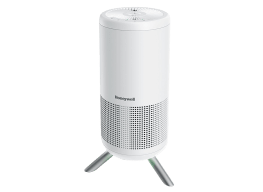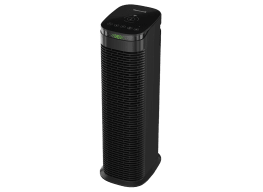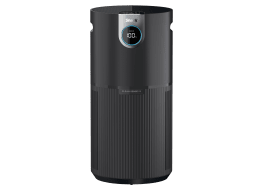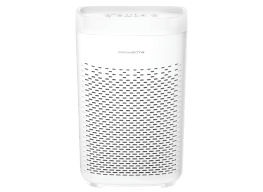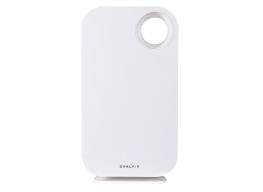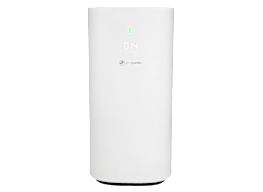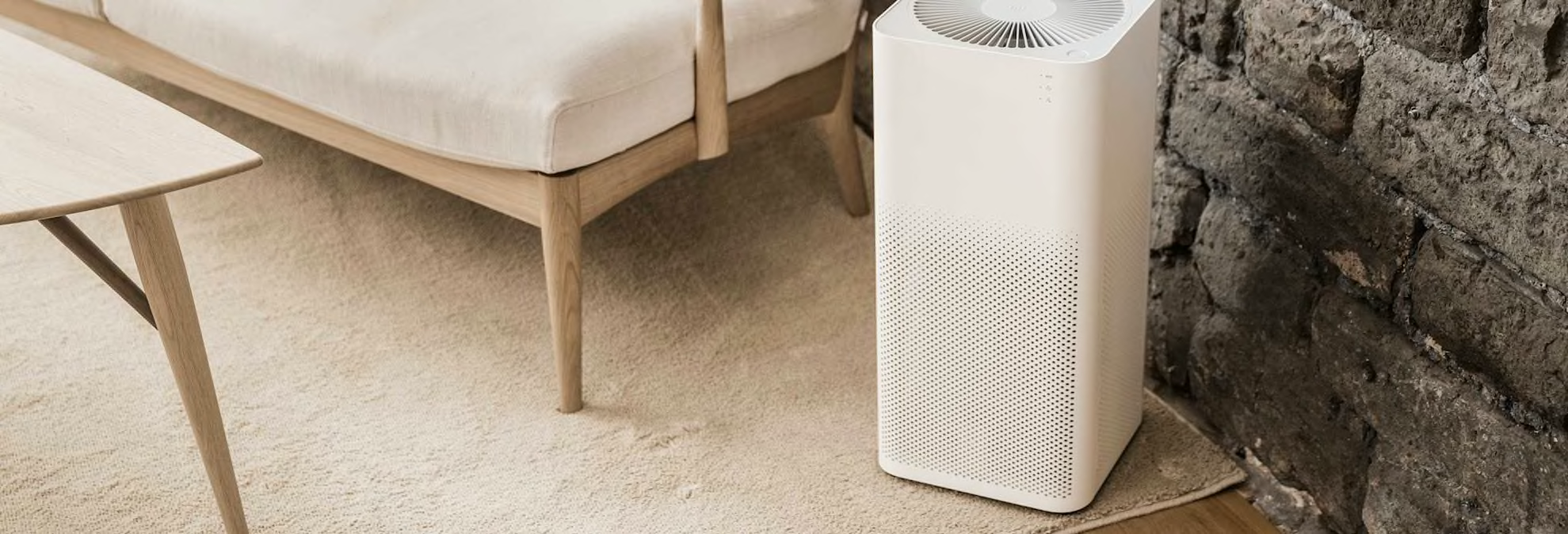
Air Purifier Buying Guide
No matter the season, clean air is important for your lungs, blood circulation, heart, and overall physical health. But it’s possible the air inside your home is dirtier than you think.
According to the Environmental Protection Agency, the concentration of certain pollutants is often two to five times higher indoors than outdoors.
Pollutants—such as smoke from tobacco, burning wood, and cooking; gases from cleaning products and building materials; dust mites; mold; and pet dander—contribute to a poor indoor environment that can have ill effects on the body. These hazardous conditions are compounded by the presence of wildfires like the ones in California and the Midwest—as well as the coronavirus, if someone at home is sick with COVID-19. (For everything you need to know about the pandemic, see CR’s Guide to the Coronavirus.)
Fine particles 10 micrometers in diameter or smaller, including those found in dust and smoke, are especially a concern because they can make their way deep into the lungs. Breathing them in for even just a few hours is enough to aggravate lungs and trigger asthma attacks. Inhaling them has also been linked to heart attacks in people with heart disease. Studies show that long-term exposure to high particle levels may even cause bronchitis, impaired lung function, and premature death.
Volatile organic compounds (VOCs), including formaldehyde, are released into the air from adhesives, paints, and cleaning products. Exposure to VOCs can cause nose, throat, and eye irritation; headaches; nausea; and damage to the liver, kidneys, and nervous system. Some gases, such as radon, can cause lung cancer and death.
How Air Purifiers Can Help
The best ways to improve indoor air quality are to remove the pollutant sources and ventilate with fresh, clean outdoor air. Room air purifiers can help when those methods are insufficient or not possible.
Air purifiers are designed to filter the air in a single room, not the entire house. (A whole-house air purifier system is tied into a home’s heating, ventilating, and air conditioning system.) And while room air purifiers help to reduce indoor pollution, there are limits to what they can do.
What Air Purifiers Do Well
The air purifiers that perform well in CR’s lab tests are good at filtering dust, smoke, and pollen from the air. Multiple studies of room air purifiers show that using HEPA filters results in reductions of 50 percent or higher of particulate matter. In a 2018 study of about 130 households, filtration resulted in about a 30 percent reduction of coarse particles, such as dust.
But how does that affect your health? Almost a dozen studies—including those conducted in Vancouver, British Columbia; Taipei, Taiwan; and Somerville, Massachusetts—looked at the cardiovascular effects of air purification and showed improved cardiovascular health among participants. An EPA review of eight studies (PDF) found that purified air delivered modest improvements in at least one health area, such as allergy symptoms. And asthmatic participants in a 2018 study by the University of California, Davis (PDF) reported a 20 percent reduction in clinic visits.
Still, there are caveats. The scientific and medical communities have not definitively linked the use of air purifiers to health benefits, because reported health benefits are inconsistent among participants and there have been very few long-term studies. Plus, some studies had other variables at play, such as the regular use of a vacuum cleaner (CR can help you choose one of those, too) or protective pillow covers, and the removal of pets from the bedroom, all of which can affect results.
As for the coronavirus, air purifiers with HEPA filters are capable of capturing the droplets that the virus travels in (when people cough, talk, or breathe). But you’ll need one that consistently draws in enough air to significantly reduce virus particles.
What Air Purifiers Don’t Do
An air purifier can remove allergens only while they’re floating in the air. Larger, heavier allergens, such as dust mites, mold, and pollen, settle to the ground so quickly that air purifiers can’t capture them in time.
What We Don’t Yet Know
Radon is another blind spot for air purifiers. Studies are inconclusive on air purifiers’ ability to tackle this dangerous gas. There is insufficient research on air purifiers that address gaseous pollutants as a group, so it’s unclear how effective they are in that regard. There is also limited data on the effect of ionizer air purifiers on health.
That brings us to another important consideration: the various kinds of air purifier technology available.
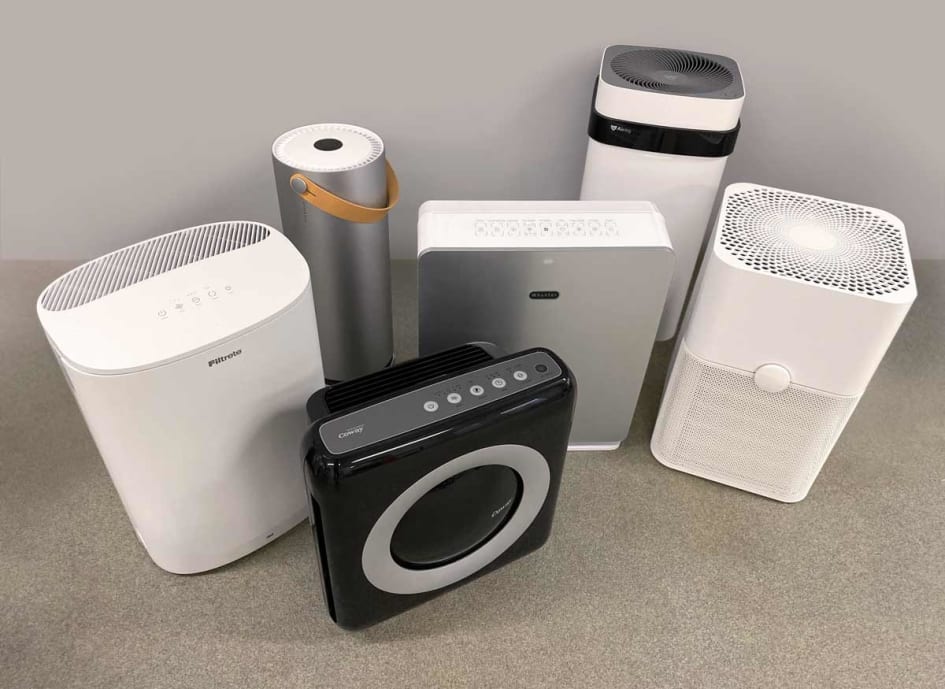
Consumer Reports Consumer Reports
Types of Air Purifiers
There are several technologies air purifiers employ for reducing indoor pollution. Some work better than others. And some can even be bad for your health.
Mechanical filters: Air purifiers with mechanical filters are the only air purifiers that CR tests. The purifiers use fans to force air through a dense web of fine fibers that trap particles. Filters with very fine mesh are called HEPA filters, which are certified to collect 99.97 percent of particles of a certain size (0.3 micrometers in diameter—particulate matter in smoke and volatile organic compounds in paints, for example). HEPA filters can remove larger particles, too, including dust, pollen, and some mold spores when they’re suspended in the air. (Note that some filters labeled “HEPA-type” or “HEPA-like” have not been certified to meet the requirements of a true HEPA filter but may still perform adequately in our tests.)
As for limitations, mechanical filters don’t help with gases or odors. And they can be expensive to maintain. Mechanical filters need to be replaced every six to 12 months; they can cost up to $200 per filter but typically cost no more than $80.
Activated carbon filters: Unlike mechanical filters, these filters use activated carbon to capture certain types of gases, including some odor-causing molecules. But they’re not particularly effective against formaldehyde, ammonia, or nitrogen oxide. Because activated carbon filters don’t combat particles, many air purifiers will have both an activated carbon filter and a mechanical filter for catching particles. Activated carbon filters gets saturated faster than mechanical filters, though, and require replacement more frequently—every three months, as opposed to every six to 12 months for mechanical filters. Make sure to budget for replacements accordingly: Activated carbon filters usually cost up to $50 each.
Ozone generators: These machines produce ozone, a molecule that can react with certain pollutants to alter their chemical composition. This can result in dangerous indoor air quality, and CR does not recommend these types of air purifiers. Makers of ozone generators often claim that the devices emit safe levels of ozone, but in the past our tests found that even at low settings, some ozone generators quickly exceeded the Food and Drug Administration’s limit of 0.05 parts per million for medical devices. Plus, studies reviewed by the EPA have shown that low levels of ozone—the chief ingredient of smog—don’t effectively destroy indoor pollutants. Research also shows that ozone has been linked to decreases in lung function and increased risks of throat irritation, coughing, chest pain, and lung tissue inflammation. Ozone exposure might also worsen asthma, emphysema, and bronchitis.
Electrostatic precipators and ionizers: In these electronic models, particles in the air become charged so that they stick—magnet-like—to plates on the machine or to nearby surfaces. CR doesn’t typically test electronic air purifiers or recommend them, because they can produce ozone.
Ultraviolet germicidal irradiation (UVGI): Some manufacturers claim their air purifiers kill airborne viruses, bacteria, and fungal spores with UV lamps. But they might miss certain bacteria and mold spores that are resistant to UV radiation. To work, the UV light must be powerful enough and the exposure must last long enough—minutes to hours, rather than the few seconds typical of most UVGI air purifiers—to be effective. CR does not test UVGI technology, though some mechanical air purifiers we test may have the function.
Photocatalytic oxidation (PCO): Some air purifiers use ultraviolet radiation and a photocatalyst, such as titanium dioxide, to produce hydroxyl radicals that oxidize gaseous pollutants. Depending on the pollutant, this reaction can generate harmful byproducts, such as ozone, formaldehyde, nitrogen dioxide, and carbon monoxide. CR does not currently test air purifiers with PCO technology. There have been few field investigations exploring the effectiveness of PCO air purifiers, but one laboratory study, conducted by researchers at Syracuse University in New York, reported that the devices did not effectively remove any of the VOCs typically found in indoor air.
A variant of PCO, known as photoelectrochemical oxidation (PECO), emerged in 2017 from the manufacturer Molekule. The Molekule Air purifier did not score well in our tests for dust, smoke, and pollen removal. Since then we’ve also tested the more expensive Molekule Air Pro, which performed better at removing contaminants on its highest setting but did not impress in CR’s other air-purifier test categories.
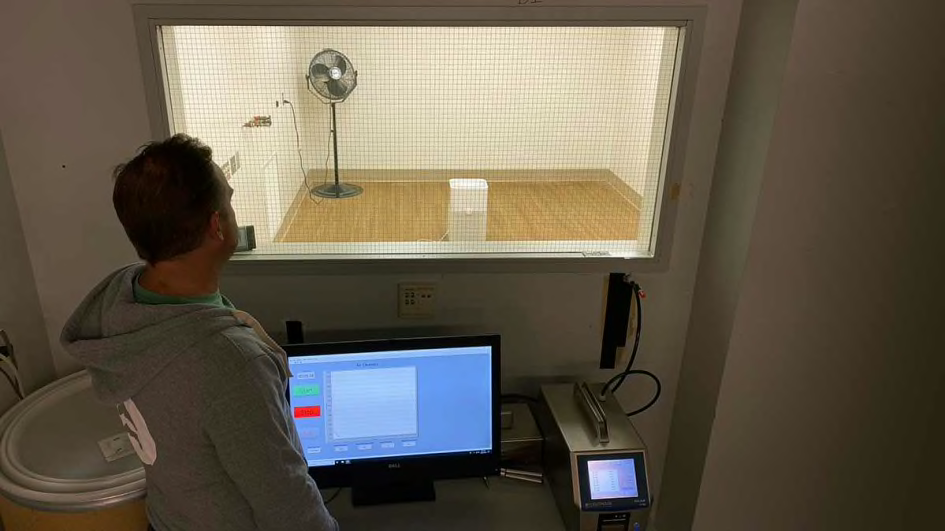
Consumer Reports Consumer Reports
How Consumer Reports Tests Air Purifiers
To see how well these machines clean the air, we inject smoke and dust into a sealed chamber and use a particle counter to measure the change in air particle concentration in the room as the test model runs for 15 minutes.
We test using particles as small as 0.1 micrometer and up to 1 micrometer, a range that includes dust mite allergens, cat allergens, smog, smoke, and atmospheric dust. We don’t measure for particles larger than 1 micrometer, such as pollen, because any air purifier that scores well in our tests should also be able to handle larger airborne particles.
Because most air purifiers have several speed settings, we test for dust and smoke removal both on the highest speed and at a lower speed that runs at a noise level no louder than 50 decibels. We also measure noise levels at every speed setting that a machine has. And because air purifiers must be running at all hours to be effective, we calculate annual operating costs, which include filter replacements and energy use to run the machine 24 hours a day for an entire year.
The very best models in our tests effectively sanitize the air of dust, smoke, and pollen. CR recommends more than two dozen models in our air purifier ratings, and most use a HEPA filter; a handful also have carbon filters.
For more, read our article on the best and worst air purifiers of the year.
What to Consider While Shopping for an Air Purifier
Cost of replacement filters: As a general rule, you should replace filters (or clean those that can be vacuumed) every six to 12 months for pleated filters and every three months for activated carbon filters. Most of the units we test have an indicator light that lets you know when to change (or clean) the filter. The costs of filters vary widely: In our tests of large air purifiers, they range from $20 to more than $200. Filters with odor-removing carbon can cost as much as $50.
Certifications: There are a couple of labels you may want to look for on the packaging. The first one is the Energy Star logo. Air purifiers must run around the clock to be effective, and you should factor in the energy cost when you shop. Energy Star certified purifiers are 40 percent more energy-efficient than standard models.
You may also see an AHAM Verifide seal, which means that the Association of Home Appliance Manufacturers has tested the model. Many air purifiers have undergone AHAM’s voluntary certification program, which provides clean air delivery rates (CADRs) and room size guidelines on the seal.
The CADR reflects, in cubic feet per minute, the volume of clean air that an air purifier produces on its highest speed setting. For example, a purifier with a CADR of 250 for dust particles reduces particle levels of dust to the same concentration that would be achieved by adding 250 cubic feet of clean air each minute. The higher the CADR, the faster and more efficient the air purifier is. Room air purifiers with HEPA filters often achieve the highest CADR. In our tests, a CADR above 240 receives an Excellent rating; 240 to 180, Very Good; 179 to 120, Good; 119 to 60, Fair; and under 60, Poor.
There are different CADR ratings for removing tobacco smoke, dust, and pollen. Focus on the CADR for your main pollutant of concern. For instance, if you live with a smoker, choose an air purifier that has a high CADR for tobacco smoke.
"CR Recommended" air purifiers meet Consumer Reports’ criteria for safety, performance, value, and reliability.
Room size: If an air purifier has an AHAM Verifide seal, you can trust that the unit can handle the suggested room size listed on the seal. Be wary about manufacturers’ claims, though. We have tested many air purifiers that are not suitable for their claimed room sizes. You can check our ratings to see what room-size range we suggest for each model based on our test results. Also, consider sizing up: Most models suitable for large rooms (350 square feet and larger) can also work well for smaller rooms at lower speeds. Lower speeds tend to be quieter—which is nice for when you’re watching TV or sleeping.
Noise: Judge an air purifier not just by how well it performs but also by how well you’ll be able to live with it. Because these machines should always be running, ideally they should also be quiet. (For reference, a noise rating around 50 decibels is roughly equal to the hum of a refrigerator.) You may be able to find a model’s decibel levels on its packaging or website listing before you buy it. Or check our air purifier ratings; we rate models on noise levels at both high- and low-speed settings.
How to Get the Most Out of Your Air Purifier
Clean or replace filters regularly. An air purifier can’t run efficiently if it has a dirty filter. Typically, you should replace filters (or clean those that can be vacuumed) every six to 12 months for pleated filters and every three months for activated carbon filters.
Place it wisely. If you have just one unit, put it in the room where you spend the most time. For most people, that’s the bedroom. (Some units can be heavy and clunky to move around, so if you want an air purifier in multiple rooms, you may want to buy a unit for each room.) Make sure to place the air purifier in a spot where nothing can obstruct airflow—away from curtains, for instance.
Adjust the speed. To avoid noise disruptions, we suggest running the unit on its high-speed setting when you’re not in the room and turning it down to low when you’re nearby. Or buy an air purifier certified for a larger area so that you can run it on a low speed and still have it work effectively.
Air Purifier Features
These features are worth considering when you shop for an air purifier.
- 1
- / 5
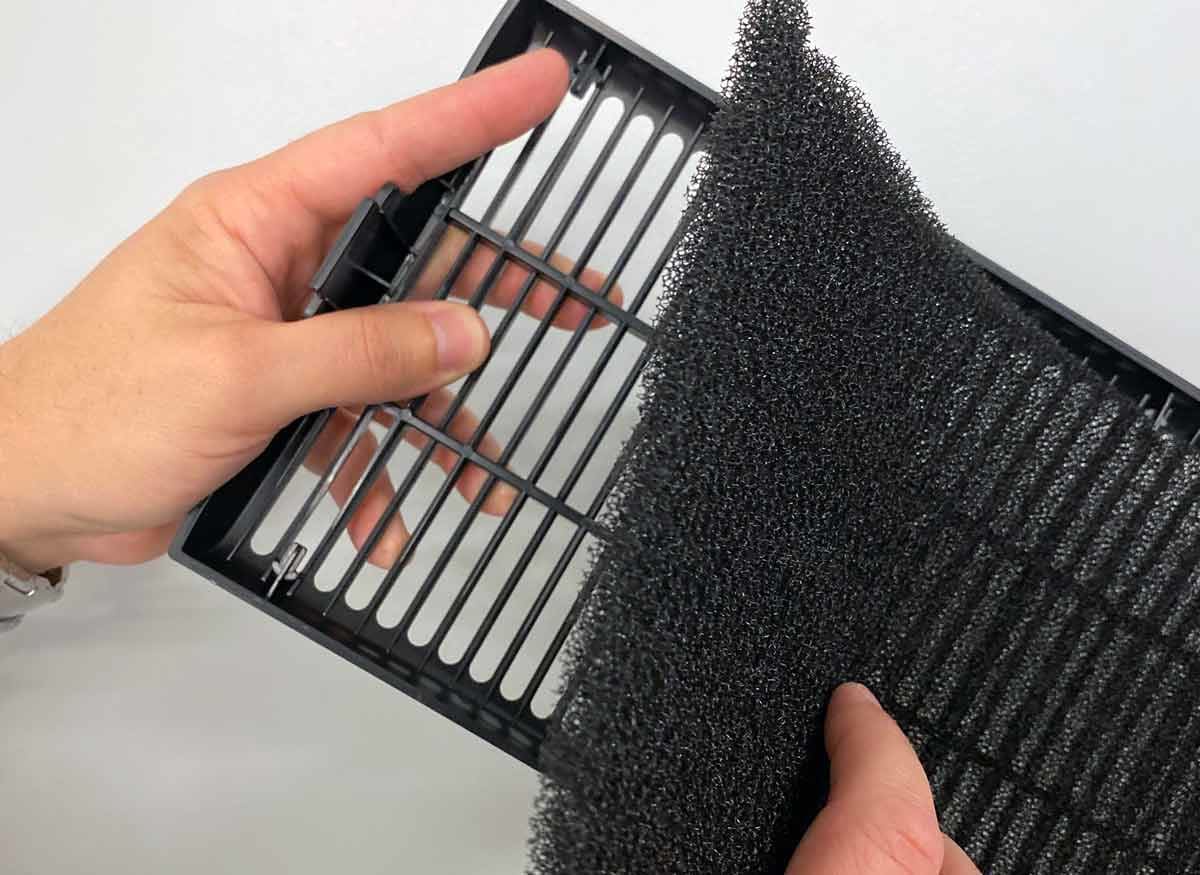
Washable Prefilters
These reusable filters collect large particles before they reach the primary filter, potentially extending the main filter’s life and saving you money on replacement filters.

Filter Service Indicator Light
This light will flash when it’s time to replace (or clean) the filter.

Air-Quality Sensors
These particle counters can detect how polluted the air is and automatically adjust the air purifier’s cleaning speed accordingly.
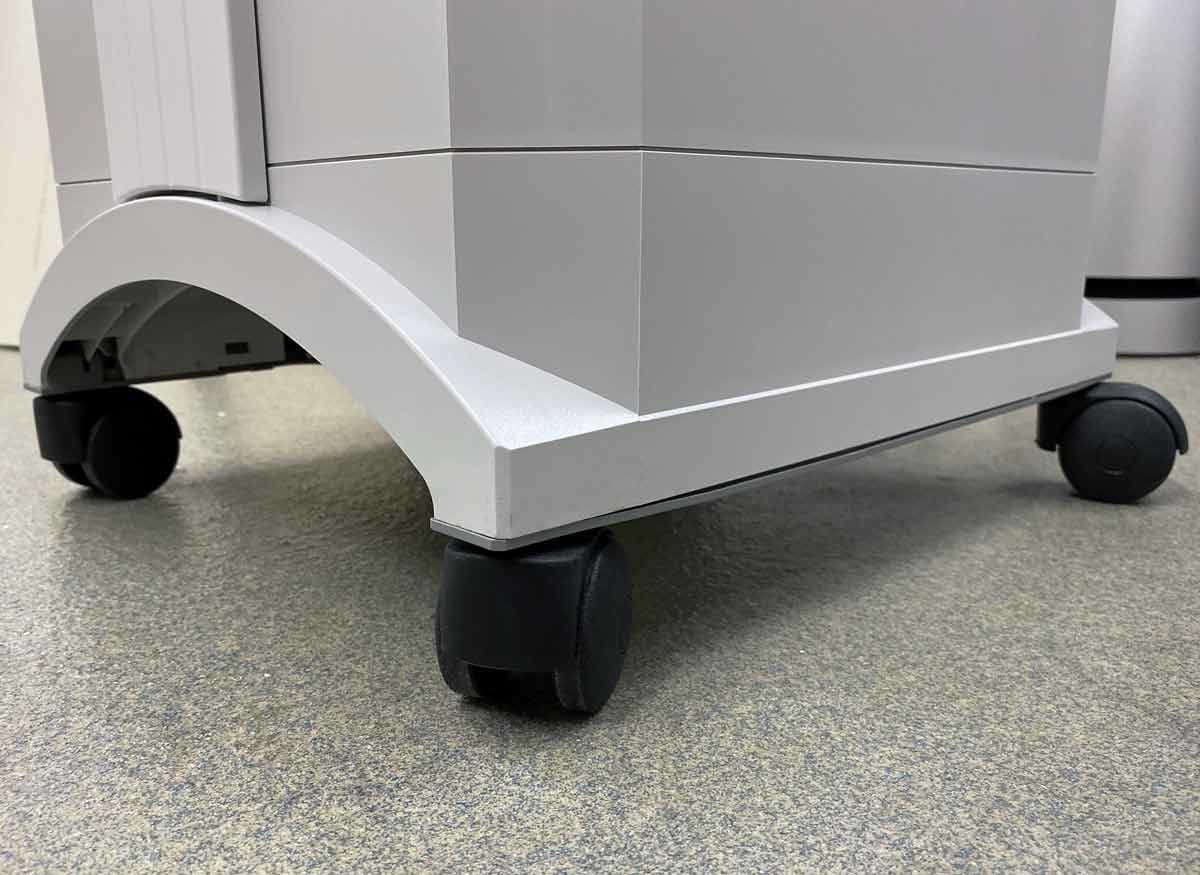
Carrying Handles and Wheels
Most portable air purifiers weigh between 10 and 20 pounds. If you plan on moving yours from room to room, get a model with casters, which make it easy to roll.

Remote Control
This lets you easily adjust settings from across the room. Some models use a phone app that serves the same purpose.
Washable Prefilters
These reusable filters collect large particles before they reach the primary filter, potentially extending the main filter’s life and saving you money on replacement filters.
Filter Service Indicator Light
This light will flash when it’s time to replace (or clean) the filter.
Air-Quality Sensors
These particle counters can detect how polluted the air is and automatically adjust the air purifier’s cleaning speed accordingly.
Carrying Handles and Wheels
Most portable air purifiers weigh between 10 and 20 pounds. If you plan on moving yours from room to room, get a model with casters, which make it easy to roll.
Remote Control
This lets you easily adjust settings from across the room. Some models use a phone app that serves the same purpose.
How to Clean Your Air Purifier
Whether an air purifier has a replaceable HEPA filter, a permanent filter, or a combination of the two, it needs regular upkeep. CR walks you through how to take care of several types.
Other Ways to Improve Indoor Air Quality
Vacuum regularly. Air purifiers can’t remove the larger allergens—dust mites and pet hair, for example—that settle on furniture and carpets unless they get disturbed and redistributed into the air. Use a vacuum cleaner with HEPA-certified filtration once or twice a week to clean floors and furniture.
Use an exhaust fan in the kitchen. Do the same in bathrooms and laundry rooms.
Stop smoking indoors. That also goes for burning candles and wood fires.
Ventilate. Open your windows on nice days to let in clean, dry outdoor air. If pollen or related allergies keep you from opening windows, run your air conditioner or forced-air cooling system with a clean air filter.
Reduce the use of chemicals. Limit the use of chemical-heavy cleaning products, and store house paint, glues, and insecticides in a basement or other area that’s away from where you spend most of your time at home.
Air Purifier Brands
Blueair is an international company based in Sweden and founded in 1996. Its products are available nationally from Amazon, Bed Bath & Beyond, Best Buy, Costco, Home Depot, Lowe’s, and Sears. Prices range from around $120 to around $2,500.
Dyson, founded in 1993, is a British company that designs and manufactures vacuum cleaners, hand dryers, bladeless fans, heaters, humidifiers, air purifiers, lights, and hair dryers and styling tools. Products are sold directly through Dyson, as well as at many major retailers, including Amazon, Bed Bath & Beyond, Best Buy, and Target. Dyson’s air purifiers are priced between about $300 and about $670.
GermGuardian develops and sells products for mass retailers. Its air purifiers are available online at Amazon, Bed Bath & Beyond, Best Buy, Costco, Lowe’s, Target, and Walmart. Prices range from about $60 to about $1,000.
Holmes models retail at mass merchants, including Amazon, Bed Bath & Beyond, Sears, Target, and Walmart. Prices range from about $60 to about $180.
Honeywell is a mass-market brand available at large merchants, including Target and Walmart, and widely online. Prices range from around $70 to around $600.
Hunter is a widely sold brand on home-shopping channels. Its air purifiers are also sold at Walmart. Prices range from $120 to $350.
Kenmore is a Sears private-label brand with air purifiers that are also sold on Amazon. Prices range from around $50 to around $240.
Additional brands include Alen, Allergy Pro, Coway Airmega, Electrolux, Fellowes, HoMedics, Ionic Pro, Molekule, Rowenta, Samsung, Sharp, SPT, Therapure, TrueAir, Vornado, Whirlpool, and Winix.

















